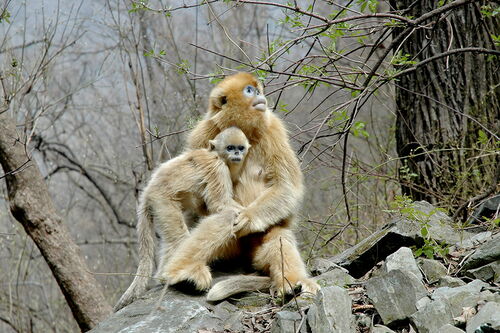The man who found Lucy
When was Lucy discovered?
Who found Lucy? Lucy was unearthed by Donald Johanson and Tom Gray on November 24, 1974, at the Hadar site in Ethiopia. That day, they had ventured out in a Land Rover to map a different area.
Donald Johanson was hiking back to his Land Rover after a morning of hard work at his archaeological dig in Hadar, Ethiopia, in 1974, when he happened to glance over his shoulder. That glance would change his life.
 Johanson (BA, '66, anthropology) spotted the fragment of an elbow sticking from the ground, and he immediately recognized that it came from a human skeleton. A careful dig followed, and Johanson and his team wound up uncovering 40 percent of a skeleton that was approximately 3.2 million years old—the oldest and most complete skeleton ever discovered at the time.
Johanson (BA, '66, anthropology) spotted the fragment of an elbow sticking from the ground, and he immediately recognized that it came from a human skeleton. A careful dig followed, and Johanson and his team wound up uncovering 40 percent of a skeleton that was approximately 3.2 million years old—the oldest and most complete skeleton ever discovered at the time.
The archaeological team celebrated the discovery with a party at the campsite, where Johanson—an avid Beatles fan—was playing the song, “Lucy in the Sky With Diamonds.” One of the women on the dig said, “Why don’t you name her Lucy in honor of the song?” And by morning, the name had stuck.
Lucy was a worldwide sensation, and it launched the career of Johanson, who was only 31 years old when he made the find. For this discovery and the many that followed, Johanson is a winner of the 2017 College of LAS Alumni Achievement Award.
Johanson was born in Chicago, but when he was nine, his family relocated to Connecticut where many of their Swedish relatives had emigrated. He was always interested in biology, but when he was 13 years old, his mentor peaked his interest in evolutionary studies, particularly the idea that modern humans and African apes shared a common ancestor. That’s when he decided he wanted to be an anthropologist.
Despite his love of anthropology, when Johanson came to Illinois in 1961, he chose chemistry because it seemed a more practical major in this age of science. But after his first year on campus, he wandered over to the anthropology department one day and happened to stumble across Oscar Lewis, an acclaimed anthropology professor known for his work on the culture of poverty. Lewis invited him to his office, and after they talked for about an hour, Johanson left with a decision to switch to anthropology.
Immediately, he began taking classes on how to map and record an excavation because, as he puts it, “I knew these skills would be of use to me if I were ever able to get to Africa. I was always interested in that murky early period where we had so few fossils.”
As an undergrad, Johanson’s first digs were in Illinois and then in northern Arizona with John McGregor, an Illinois professor who specialized in southwest archaeology in the United States. After graduating in 1966, Johanson went to the University of Chicago for his PhD, a program that brought him to his first dig in Africa in 1970.
“But 1974 was the pivotal year of my life,” he said. Not only had he just finished his PhD and taken a professorship at Case Western University in Cleveland, but that’s when he discovered Lucy on November 24.
News of the discovery quickly reached the Ministry of Culture in Ethiopia, which sent out a number of people, including representatives of the National Museum of Ethiopia—and several reporters.
“The announcement went out to the world within two weeks of the discovery,” Johanson said. “And by the time I got back to the U.S. in early January, everyone was calling my office for interviews. But the difficulty was that we didn’t know what species Lucy belonged to, and we didn’t really want to say who she was.”
The age of Lucy was significant because it broke the 3-million-year barrier. Before her discovery, Johanson said the number of human fossils older than 3 million years could “fit in the palm in your hand.” So finding a skeleton that was 3.2 million years old was breathtaking.
Lucy was a small female—only 3½ feet tall—but the most important discovery was her form of locomotion. They could tell from the hip, knee, and ankle bones that she walked upright—a human trait. Because she contained a mix of human and ape features, such as a small brain and ape-like teeth, Johanson saw her as a common ancestor to two branches, one that went extinct 2 million years ago and the other evolving into modern humans.
In 1978, Johanson announced this conclusion, giving her the scientific name of Australopithecus afarensis, in honor of the Afar region and the local Afar people.
Lucy was the first and most famous discovery of Australopithecus afarensis, but Johanson’s team has since discovered over 400 specimens of her species at the 40-square-mile Hadar site over the years. In 1975, a young doctor on their team made an even larger find—fragments of 17 ancient individuals of Lucy’s species, including adults, infants, and adolescents. National Geographic magazine dubbed them “The First Family.”
“This collection of Lucy’s species had for some unknown reason experienced a mass death,” Johanson said. “It remains a mystery.”
If the First Family had been discovered before Lucy, he said it would have been an even more famous find. But Lucy remains an archaeological celebrity because she came first.
“She was a major breakthrough because it gave us a view of what a single individual looked like,” he explains.
All of a sudden, Johanson found himself traveling around the world giving lectures, writing articles for popular magazines such as National Geographic, and co-authoring books, such as the best-selling "Lucy: The Beginnings of Humankind," which won the American Book Award and is one of the most widely read books on paleoanthropology ever. He has appeared in numerous television documentaries and hosted and narrated a three-part series for Nova, which was nominated for an Emmy Award.
In Berkeley in 1981, Johanson founded the Institute of Human Origins, a nonprofit organization that leads research expeditions and does educational outreach. It did not become formally connected with a university until 1997, when it moved to Arizona State University.
Johanson stepped down as director of the Institute in 2009, but he continues to run a popular online course for edX. Meanwhile, Lucy’s skeleton remains securely locked in a safe at the National Museum of Ethiopia, although copies are on display many places such as the Field Museum of Natural History in Chicago.
“I was thrilled when I discovered her,” he said. “Here was a discovery at my feet that I had been fantasizing about as a student. What I was totally unprepared for was the fact that it would have such an incredible appeal to the average person interested in human evolution.”
Learn more at the University of Illinois
Interested in learning more about unraveling the mysteries of the past? Study anthropology at the University of Illinois!








